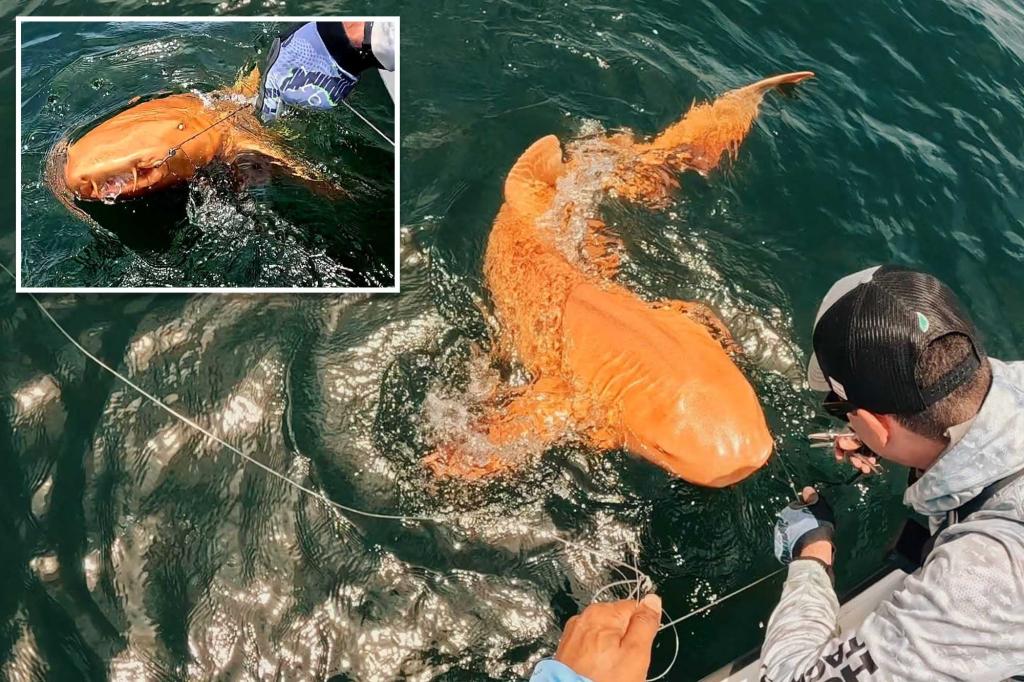One fish, two fish, red fish — orange shark?
Scientists came across a bright orange shark in the wild whose creamsicle-colored skin was pigmented by two genetic conditions that are exceedingly rare among the predators of the deep.
The first-of-its-kind shark was found during a fishing trip in Costa Rica’s Tortuguero National Park in August 2024, according to a recently published science journal report.
The dutiful researchers photographed the beauty before swiftly releasing it.
Scientists lauded the discovery and said it’s the first and only time an orange shark has ever been recorded, according to a report published in the Marine Biodiversity journal.
The nurse shark, which is commonly found in Costa Rica’s coastal marine parks, was apparently born with xanthism, a genetic condition that results in the loss of darker pigmentation and makes lighter ones like oranges and yellows more prominent.
The orange wonder, which resembles an oversized, colorful koi fish more than a feared sea beast, is a double rarity as scientists noted it likely also has albinism — another genetic condition that dampens the body’s production of melanin and leaves many physical features stark white.
In the shark’s case, its eyes were a pasty white with “no visible irises,” scientists wrote.
The unique combination of the two conditions paved the way for the shark’s jaw-dropping pigment. Scientists also suggested environmental factors could have contributed to its vibrant hue, including inbreeding, stress and hormonal imbalances.
The average nurse shark usually has light brown skin, which helps them blend in with their surroundings, and beady black eyes surrounded by a white cornea.
They also have little vampiric tusks poking out of their upper lip and use suction to tear into their prey, rather than strong jaws and razor-sharp teeth other kinds of sharks are known for.
The scientists don’t believe the genetic variations will have any impact on the shark’s lifespan since it has already reached adulthood, even though it lacks the crucial camouflage ability.
Albinism, while rare in sharks, has been recorded more consistently in other species, both on land and in the sea.
In April, an Iowa family encountered a pair of albino deer while celebrating their son’s 13th birthday. They at first mistook the duo for llamas before more deer with normal pigmentation pulled up the rear of the herd.
A small mob of albino kangaroos was taken in by an animal sanctuary in Australia, nearly outnumbering the normal kangaroos, who didn’t bat an eye at their companions’ apparent differences.
Read the full article here


